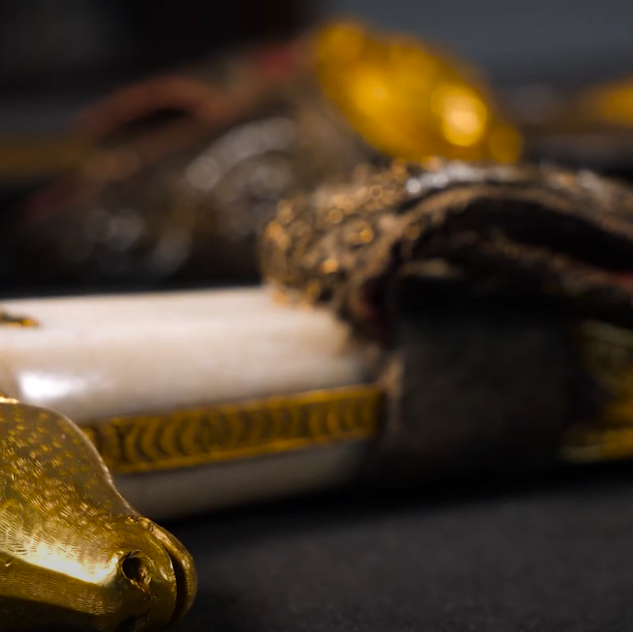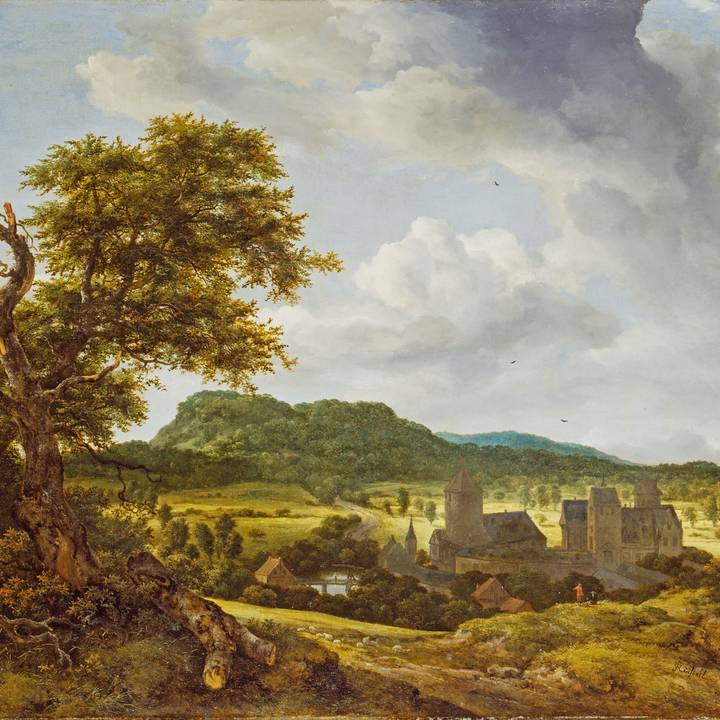MEET THE EXPERT: FIVE WORKS OF ARMS AND ARMOUR FROM QAJAR IRAN
The early nineteenth century was a period of great artistic achievement in Iran. In 1797, the second Qajar king Fath-’Ali Shah inherited from his uncle a vast empire and he was keen to legitimise the rule of his dynasty. He sponsored a wide-ranging artistic programme with a clear visual style. Both cosmopolitan and drawing from local traditions, here are five works of arms and armour that reveal the artistic landscape of the 'Guarded Domains of Iran'.
Cuirass
Hinged body armours were a relatively late introduction to Iran. The earliest surviving examples date from the middle of the eighteenth century and they are all richly decorated with overlaid gold. That Fath-’Ali Shah appreciated this art form is clear from our example, which bears his name, and from a very similar armour gifted by him to George III in 1812.
Mace
By the early nineteenth century, cold arms and armour were no longer at the cutting edge of military technology and their designs were driven largely by visual appeals to the past. This mace, made by Mustafa, son of Jamal, balances the bulky presence of a traditional mace with an intricate steel lattice heavily decorated with gold overlay. The spiral pattern on its haft evokes contemporary architecture, while the knotted pattern of its overlay is also seen in manuscript painting.
Rifle
Although the Caucasus was conquered by the Russian Empire in two brutal wars during Fath-’Ali Shah’s reign, the artistic influence of Iran remained. This rifle barrel, made in 1846 or 1847 by Hajj Ahmad for a certain Mu’ammar, retains the dense arabesques in gold overlay that characterise so many Qajar works of arms and armour. Here, it is set on a wooden stock using nielloed silver, a technique strongly associated with the Caucasus.
Dagger
This walrus-ivory hilt was carved with the likeness of Muhammad Shah, the grandson and successor of Fath-’Ali Shah. Carved by the celebrated artist Ahmad al-Husayni for governor Mustafa Quli-Khan, it may form part of a series with a similar dagger depicting the ancient king Manuchehr, which is dated AH 1254/1838–9 CE. Made early in the reign of Muhammad Shah, the dagger follows the visual style promoted by his predecessor and consciously places Muhammad Shah in a royal pantheon going back to the kings of legend.
Shield
Made in AH 1265/1848–9 CE, the year after Muhammad Shah’s death, this fascinating painted shield shows the enduring legacy of the first decades of the nineteenth century. Likely made in Shiraz, the lacquered painting is reminiscent of 1810s and 20s manuscript painting from the same city. As a major city in the south of Iran, Shiraz was an important trade hub on the route to India. Our shield likely travelled along that route, as it was later fitted with bosses made in Sindh.








